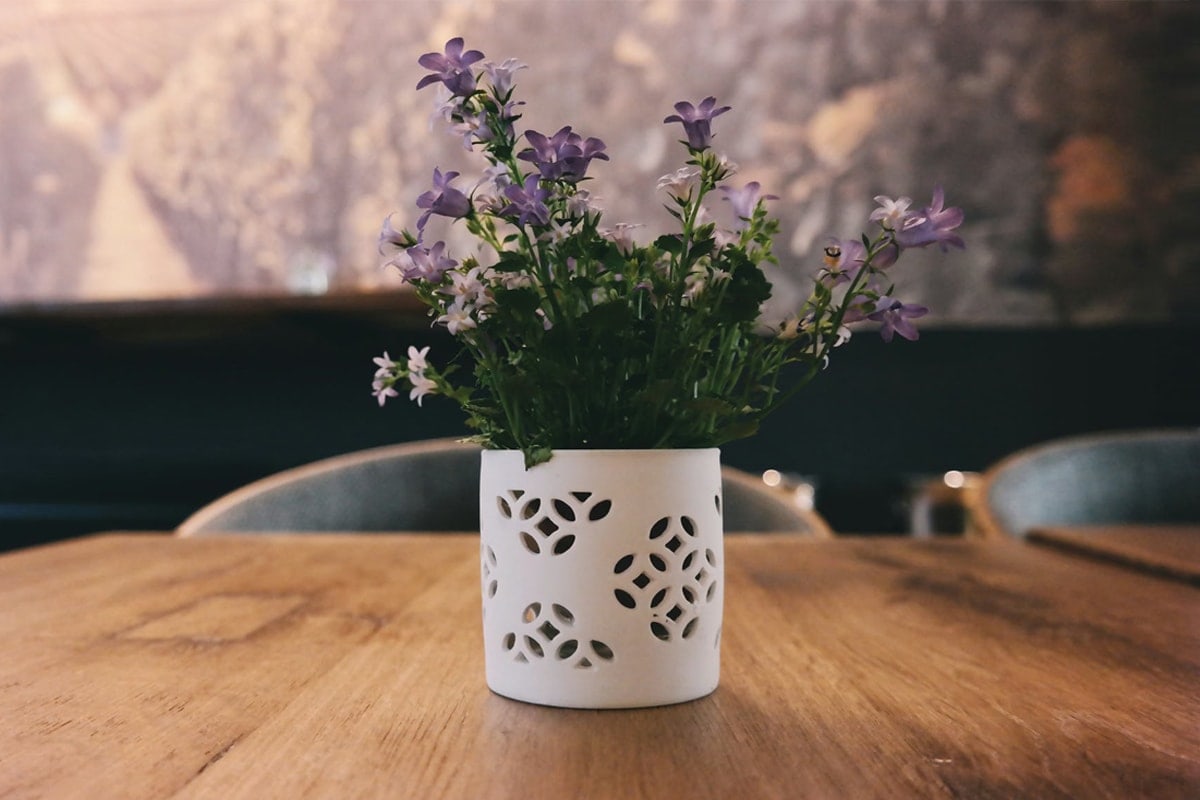Recovered wood comes mostly from demolished old barns or other farm buildings, warehouses, factories and similar objects. It is used in the interior decoration to give interior spaces character and thereby achieve a special appearance as well as fascinating style.
Recovered wood can be used in modern interior spaces in a variety of ways. It is used both in the production of floors, in furniture manufacturing and carpentry.
A table, desk or cupboard made out of old wood can enrich an interior with originality, cosiness and warmth, with which wood is associated. Every furniture that is made of this wood is extraordinary. Each wooden element is different and unique. Such unique and fascinating patterns could only be created by nature.
Interestingly, every piece of wood has its history. Its shape and appearance have been shaped over the course of time by natural events.
In one piece of wood there might be visible splits, which have been caused by burrowing insects or by long-lasting effects of atmospheric phenomena; In the other piece there will be signs of use or assembly: holes for bolts or other mounting elements.
The imperfection of the material and cracks, which often appear on planks or wooden furniture elements, are not defects which diminish the value of the product. They are desirable factors that make the product unique and extraordinary.
Furniture from such recovered wood will enrich every house with an enchanting element.
The combination of wood and metal – not infrequently of recovered material – results in a piece of furniture in modern industrial style, which also spreads warmth and comfort.
The most famous furniture in the world from recovered wood
Recovering wood has a long history. It is a precious substance that has always been treated with great respect.
The most famous furniture in the world, made from recovered wood, is the secretaire of the presidents of the United States. The 160-kilogram oak desk has a worthy place in the Oval Office. The history of the furniture is incredible.
The furniture brought into the White House on November 23rd, 1880 was a gift from the Queen of the United Kingdom of Great Britain and Ireland – Victoria for the former US President Rutherford Hayes.
How did the furniture appear in the White House?
The story begins in 1845, when the British admiral, sailor and arctic explorer Sir John Franklin entered his third voyage in search of the northwest passage. The sailing ships “Erebus” and “Terror”, equipped accordingly and prepared for the dangerous research trip, should sail the route from Baffin Bay to the Bering Sea. The goal of the expedition was to prove thet the shortest route from the Atlantic to the Pacific leads through a labyrinth of Arctic islands north of North America, which would facilitate trade with Far Eastern markets. The ships have disappeared without a trace.
After two years, a rescue operation with five ships was organized, including the ship “Resolute”. The action was unsuccessful, four ships got stuck in the Canadian ice. The sailors left the boats and returned to England.
In 1855, a thousand nautical miles from the place where the ships were abandoned, “Resolute” was found and taken over by an American whaler. The government of the United States has repurchased it for 40 thousand dollars and, after renovation, handed it over to Britain as a friendship gesture. In the transfer ceremony, which took place in Portsmouth, Queen Victoria has also participated.
Twenty years later they decided to dismantle the ship. Queen Victoria saw it as not appropriate to use the wood from dismantling the ship as fuel – this would have been a sign of disrespect to the United States. It was therefore decided to make secretaires from the material and give these to selected personalities from the world of international politics.
The sketch of the furniture was created in 1879 and is still preserved in the National Maritime Museum in Greenwich and has also been made accessible in digital form.
A small desk on which correspondence was written has found its place on the Queen’s private yacht – HMY Victoria and Albert II. A similar piece of furniture was donated to the widow of business man and philanthropist Henry Grinin, who was looking for the missing crew of the expedition in the north of Canada. A large desk was transported to Windsor Castle, serving the Queen and future rulers for everyday work.
The fourth desk was delivered to US President Rutherford Hayes on November 23rd, 1988. On the front the appears the presidential coat of arms. At present, the coat of arms is out of date – the head of the eagle is looking in the other direction.
The following inscription appears on a brass board attached to the desk: “Secretaire Made From the Timbers of the British Arctic Ship „Resolute“ and Presented by Queen Victoria to the President of the United States”.
At the request of President Franklin Roosevelt, a wooden board with the carved presidential seal was fastened on the back of the desk.
Further expeditions – there were about 40 expeditions – were unfortunately also not able to find wrecks of the Franklin-Ships.
It was only in 2014 that the Canadian Prime Minister’s office officially announced that one of the wrecks of the Sir John Franklin’s tragic expedition was found.
The desk and the supposed, mysterious compartment played an important role in the film “National Treasure: Book of Secrets”.
It also appeared in a video game.
Each subsequent landlord changes the decoration of the Oval Office in the White House. The only unchanged elements are the walls, the fireplace and the “Resolute” desk.
Lyndon B. Johnson, Richard Nixon, and Gerald Ford were the only US presidents who did not use the desk.
“Resolute” is no exception in the history of sailing ships. Francis Drake’s famous “Golden Hind”, known for the expedition around the world, was preserved and erected as a monument in honor of the captain and the whole nation in the fight against Spain. It stood on the quayside nearly a hundred years when King Charles II decided to make memorial chairs from the wood and donated those to one of the university libraries in Oxford (Bodleian Library).


